It can be a worrying experience to get bitten by a bug, particularly if you don’t know what little critter caused the red, throbbing welt on your skin. Do not panic.
The majority of ordinary insect bites and stings are benign and swiftly recover. However, some insect bites and stings, such as those from bees, hornets, wasps, and fire ants, can result in severe pain or even a life-threatening allergic reaction.
Others, such as bites from dangerous spiders, need emergency medical attention right away.
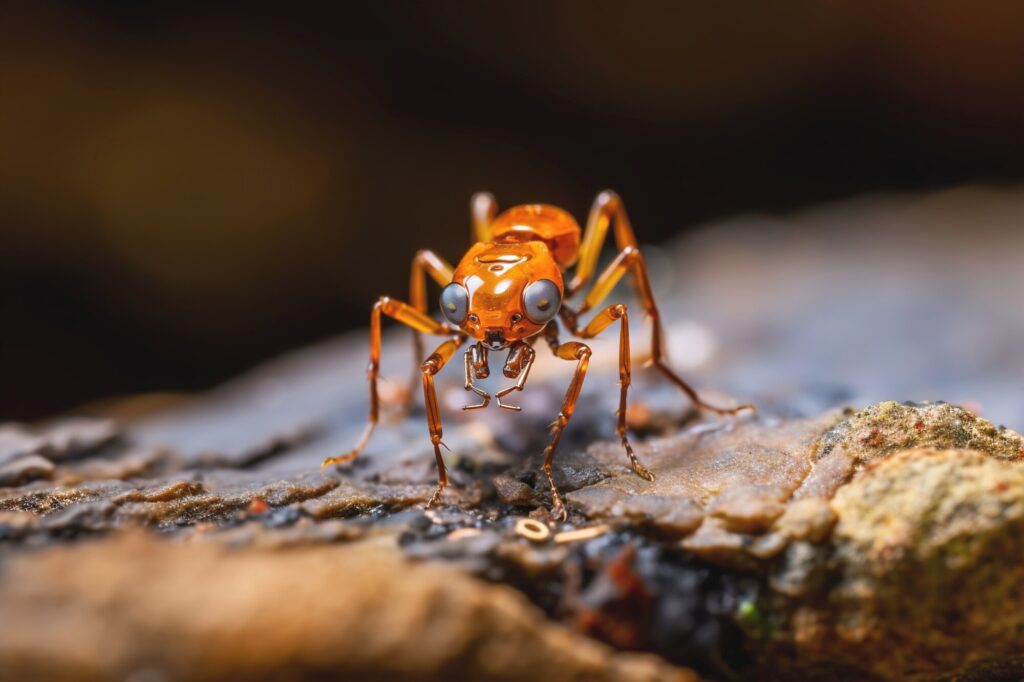
It’s helpful to know what kind of bug bit you, because each bite has unique characteristics that can help you identify the person who did it and treat it.
Knowing how to recognize a bug bite based on its appearance and sensation will help you decide whether to seek medical attention right away or treat it at home.
The appearance of 13 bug bites is shown below.
Mosquito Bites
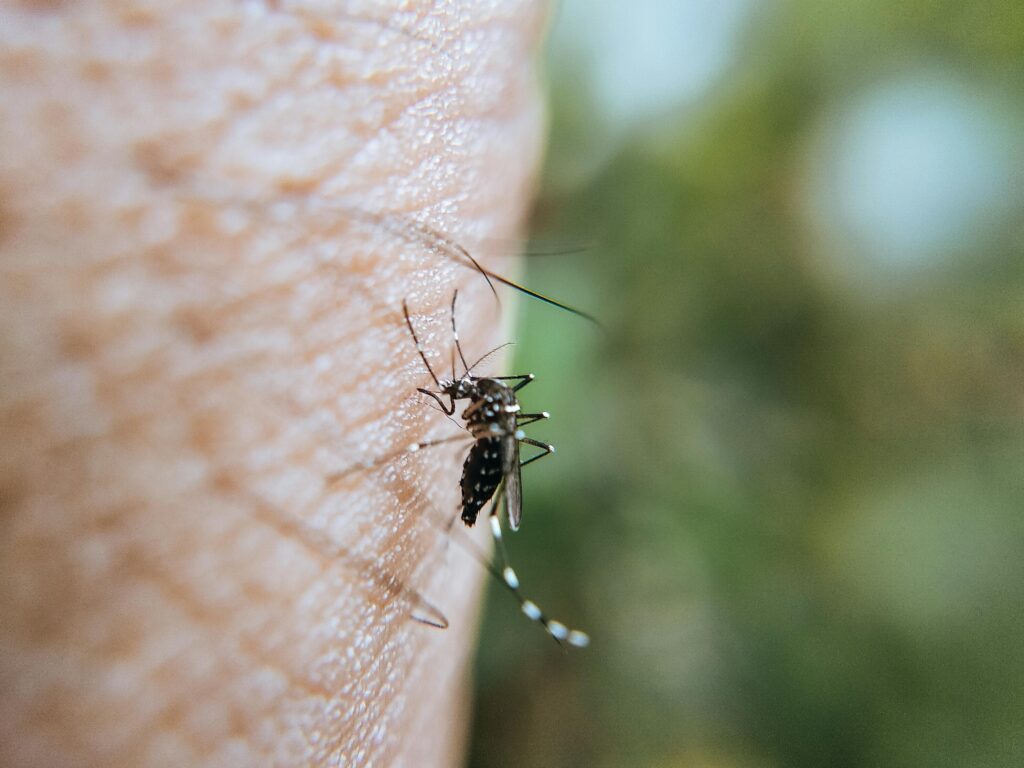
A mosquito bite is mostly a harmless bug bite, but it can occasionally result in a serious infection such the Zika virus (especially dangerous for pregnant women), West Nile virus, malaria, or eastern equine encephalitis (EEE). [1]
- Zika causes a short-lived, flu-like disease for most people. However, microcephaly and congenital abnormalities are common in babies born to pregnant mothers infected with Zika [2].
- The Centers for Disease Control and Prevention (CDC) reported 24 cases of West Nile virus in 14 U.S. states in 2024. [3] Headaches, bodyaches, fever, vomiting, joint pain, diarrhea, and a skin rash are among the symptoms. [4] Those who have a more severe West Nile infection may develop meningitis or encephalitis, which includes symptoms like neck stiffness, severe headache, disorientation, high fever, and convulsions.
- According to CDC data, only around 2,000 cases of malaria are reported in the United States each year, and the disease is contracted through the bite of a parasite-infected mosquito. [5] Malaria symptoms are similar to those of the flu and might include fever, headache, muscle aches, diarrhea, nausea, and vomiting.
- EEE cases are uncommon yet fatal. Thirty percent of those infected with EEE do not survive, and many of those who do experience issues with their brain and neurological system. [6] The virus causes headache, fever, vomiting, convulsions, diarrhea, sleepiness, and behavioral changes. [7] On average, 11 people in the US contract this virus each year.
Bedbug Bites
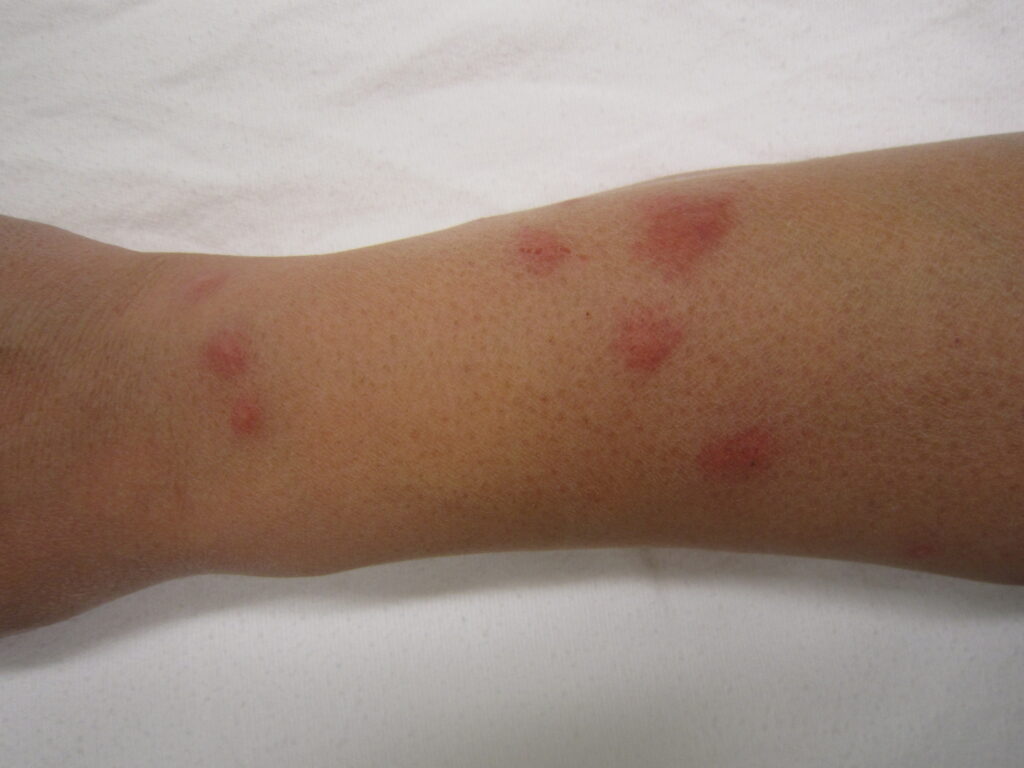
Because bedbugs inject a chemical in their saliva that makes bites harder to see, [8] you may see three or more grouped red marks, commonly forming a line, up to 14 days after a bedbug bite. [9] You usually won’t feel pain when a bedbug bites you.
A mild or severe allergic reaction can occur in certain people. A raised, red skin lump, blister, or welt known as hives that is extremely itchy and swollen for several days might be the outcome of this [10].
According to the American Academy of Dermatology Association, you should see a board-certified dermatologist for treatment if you have hives, numerous bites, or notice a bite that appears infected. [8] Bedbug bites can happen anywhere on your body, but they usually appear on uncovered areas like your neck, face, arms, and hands. [8] The CDC states that although bedbugs are common and bothersome, they do not spread disease [11].
Black Widow Bites
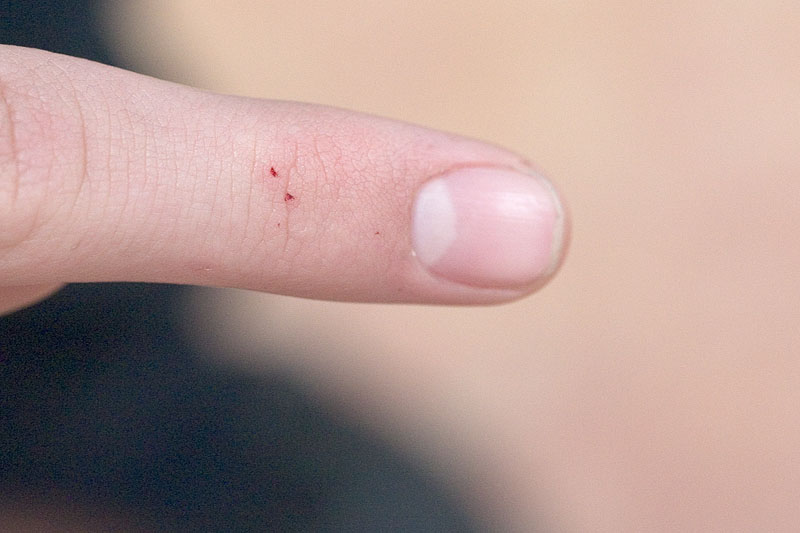
Venomous spider bites, such as those from the black widow or brown recluse, are quite harmful and can result in a serious reaction. [12] The bite of the black widow, which appears as two puncture scars, induces an intense, instantaneous pain that is followed shortly by numbness. Additional symptoms that may persist for one to three days include: [13]
- An itchy rash
- Intense sweating
- Breathlessness
- Headache
- Producing more saliva
- Muscle cramps in the shoulders, chest, back, and stomach that hurt
- Swollen or drooping eyes
Even if you didn’t witness the spider that bitten you, you should always get medical help right away if you think you could have been bitten by a deadly spider. Dial 911 or 800-222-1222 to reach America’s Poison Centers. Intense pain, a developing wound at the bite site, breathing issues, or spreading redness or streaks are all indicators that immediate medical attention is required [12].
Some spider bites are a serious emergency, but the majority are not deadly and merely result in mild symptoms like red skin, swelling, and discomfort at the location, or even no symptoms at all [12]. You should seek medical attention right away if you experience symptoms of an allergic reaction to a spider bite, such as tightness in the chest, difficulty breathing, difficulty swallowing, or facial swelling. [14] The CDC also advises getting a tetanus booster shot every ten years because spider bites can transmit tetanus. [15]
Brown Recluse Spider Bites
The poisonous brown recluse spider typically inhabits shady, empty areas. It is common for people to be unaware that they have been bitten by a brown recluse until approximately one hour after the bite. [13] In the hours that follow, the bite may worsen and resemble a blister or bruise with a blue-purple patch surrounding it, resembling a bullseye. [13] Later, the bite becomes crusty and develops scarring. The University of Kentucky states that this kind of spider is found in a number of Midwestern states, the central Southern states (such as Arkansas, Alabama, Louisiana, Mississippi, Missouri, and Texas), and the western portions of some Southern states (such as Georgia, Kentucky, and Tennessee). It hardly ever ventures outside of these regions. [16]
A brown recluse spider bite can cause fever, chills, itching, nausea, and sweating within a few hours. [17] According to MedlinePlus, some people will experience a serious reaction that can result in kidney failure, seizures, and coma. [17] If you think you may have been bitten by a poisonous spider, make sure you get medical help right away. Dial 911 or 800-222-1222 to reach America’s Poison Centers.
Tick Bites
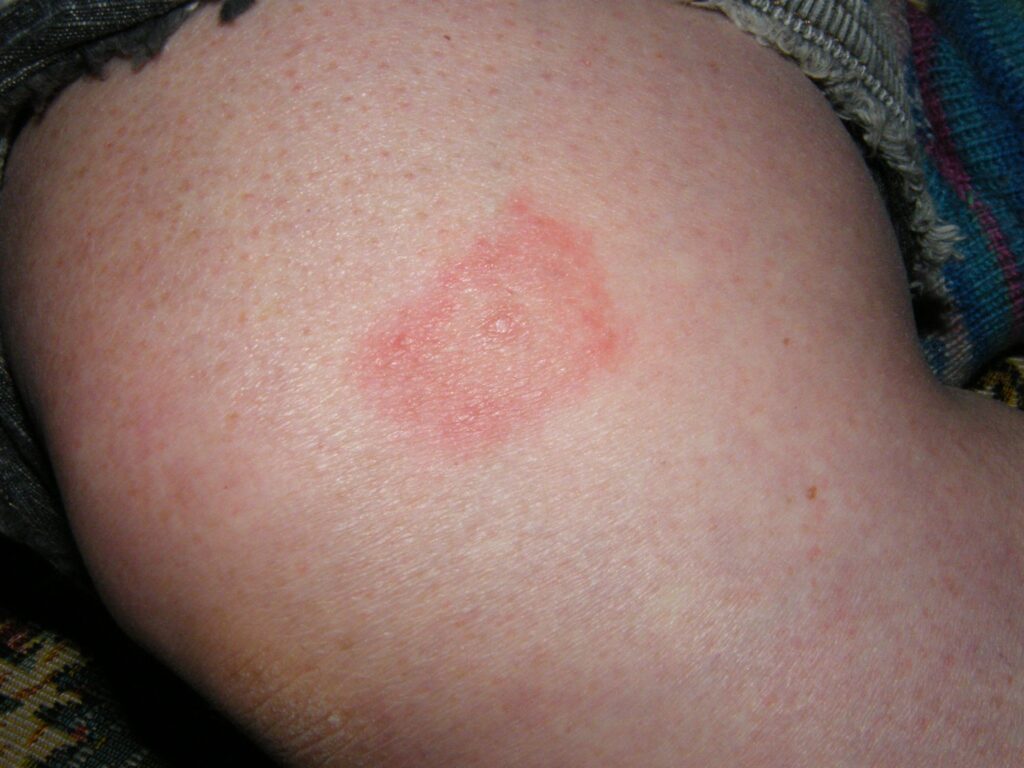
Many tick bites go undetected, and they can be difficult to identify. Many do not result in unpleasant, itchy skin, but some do. Although they might be so tiny that they are invisible until they grow after feeding on blood, ticks frequently stay on the skin. Their bites can result in a rash or a small, painful bump on the skin [18].
Because ticks can spread disease, some tick bites can be harmful. Dog ticks can transmit Rocky Mountain spotted fever (RMSF), while black-legged ticks, formerly known as deer ticks, may transmit Lyme disease. Up to 30,000 instances of Lyme disease are reported by doctors annually in the US [19]. These infections can cause a variety of skin-related symptoms.
Up to a month after the tick bite, Lyme disease symptoms can include a ring-shaped skin rash that resembles a bull’s-eye on a target. [20] Many tickborne illnesses also cause fever, exhaustion, headaches, chills, and irritation. [18] Later symptoms like painful or swollen joints, memory loss, or other autoimmune reactions that resemble other illnesses may manifest when Lyme disease is advanced.
Rocky Mountain spotted fever from a tick bite is rare.[21] It causes a fever, headache, muscle aches, an upset stomach, and a skin rash. [22] The rash of pinpoint red spots begins on the ankles and wrists after two to four days of fever, but later the rash spreads to the rest of the body. However, 1 in 10 people with RMSF never get a rash, and less than half of those with RMSF get a rash in the first three days.[22] Although this infection can be severe — and even fatal — it is preventable and treatable with prompt medical care using an antibiotic medication called doxycycline, according to the CDC.[23]
Flea Bites
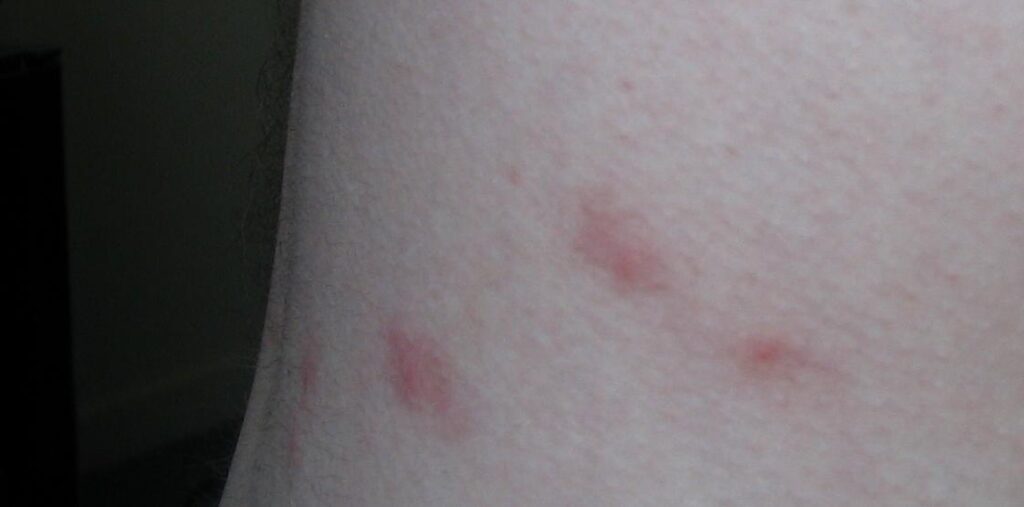
Flea bites typically occur in clusters or in a straight line, and symptoms might start to show up as soon as a few hours after the bite. You might observe a rash of tiny, red pimples that might or might not bleed, as well as irritation and swelling surrounding an injury or sore. Additionally, there may be an off-color ring surrounding the bite [24].
Although flea bites are most frequently found on the legs and ankles, they can also occur above the knee in those who spend a lot of time in bed. Blisters may develop if a person is allergic to flea bites [25].
It’s highly probable that you have flea bites if you have a pet that scratches a lot and you discover fleas on them in addition to these symptoms in the bites [24].
According to MedlinePlus, scratching the rash might result in a skin infection and may require medical care.[25] The Cleveland Clinic states that antihistamines, hydrocortisone, ice, and natural remedies including aloe, chamomile tea, oatmeal, and honey can lessen itching.[24]
Bee Stings

A red bump and swelling may develop around the site of the sting. Some people experience a moderate reaction, with swelling increasing over the next few days. Bee stings cause a sharp pain that may last for a few minutes.[26] This pain usually goes away in a few hours, but the area may still feel sore to the touch a few days later. Additionally, those with moderate symptoms as opposed to mild ones may have redness that is significantly more intense [26].
Bee venom introduces proteins that attack skin cells and set off an immunological reaction, causing swelling where the sting happened or throughout your body, including your throat and lungs. [26] Anaphylaxis is a serious allergic reaction that requires immediate medical attention. [26] Signs of a severe bee sting allergy include: [26]
- Hives
- Flushed, pale skin
- Itching
- Swelling of the tongue and through
- Breathlessness
- Dizziness
- Cramps
- Nausea
- Vomiting
- Diarrhea
- Cardiac arrest
According to the Mayo Clinic, previous bee stings increase the risk of anaphylaxis by 25 to 65 percent during the subsequent bee sting; therefore, precautions may be required [26].
Lice Bites
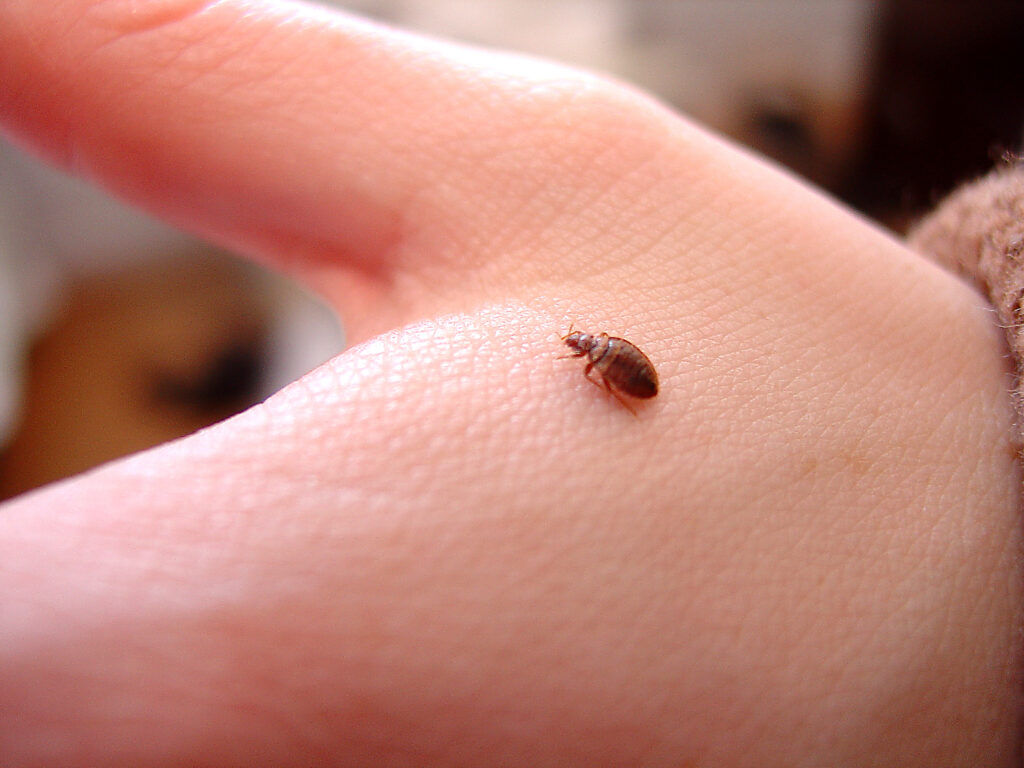
Because lice bites are so small, they typically don’t hurt, but they do itch. Lice bites are tiny red bumps on the shoulders, neck, scalp, and other locations caused by minute parasitic insects called head lice, body lice, or pubic lice that can reside on your clothing or in your sleep. Itching may not begin for four to six weeks after a person gets lice for the first time [27]. Some people may get a big, unpleasant skin rash from lice bites, especially if they scratch and an infection occurs.
In addition to head lice, which bite the head, neck, and shoulders, body lice frequently bite the shoulders, abdomen, and buttocks. A distinct species of lice, known as pubic lice, can cause blue-gray spots to appear under the buttocks, chest, and thighs. [28] People who have pubic lice may experience swelling of the lymph nodes, and if they have spread to the eyelashes, they may also experience irritation, burning, and itching in their eyes.
Ant Bites and Stings
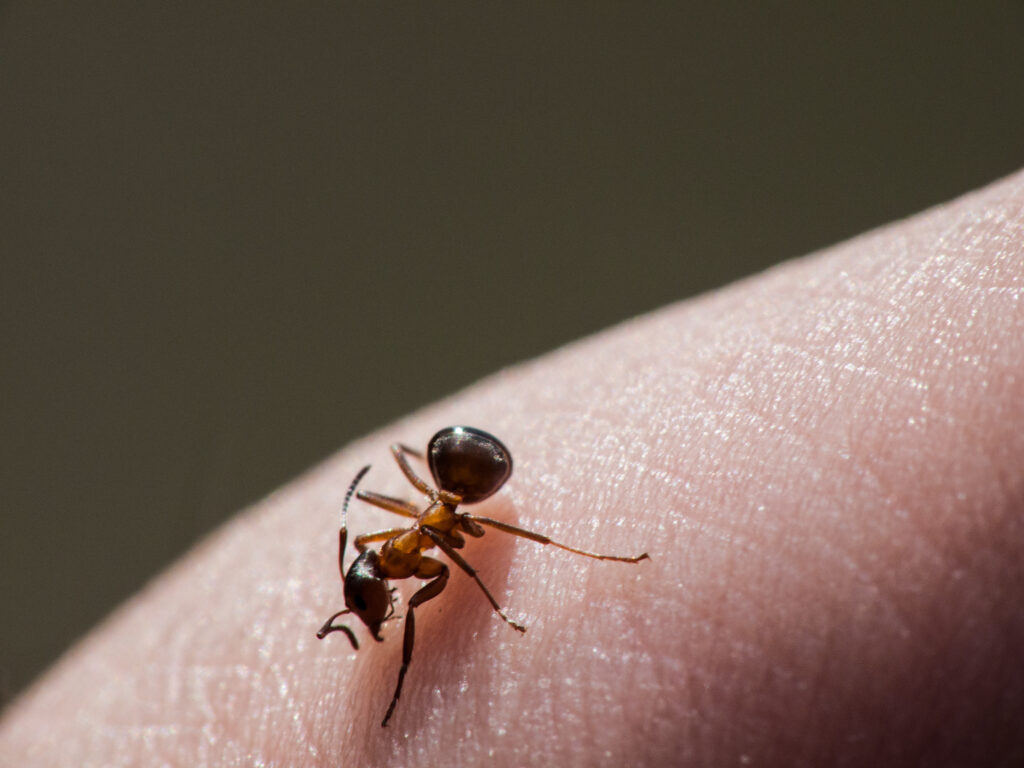
Usually unpleasant, ant bites and stings result in red pimples on the skin.
Certain ants, such as fire ants, are poisonous, and their bites can result in excruciating pain and a red spot, which is the most typical reaction and is a hive that remains in one place. [29] White, fluid-filled pustules or blisters form a few hours later and persist for a few days to a few weeks. If these bites happen under clothing, they usually happen in groups [29].
Along with digestive problems like nausea, cramping in the abdomen, and diarrhea, ant bites can also cause hives, itching, and redness that may appear far from the bite.[29] The American Academy of Allergy, Asthma, and Immunology suggests that leaving the blisters alone will speed up their healing because fire ant venom kills bacteria, making the bite sterile.[30]
Mite and Chigger Bites
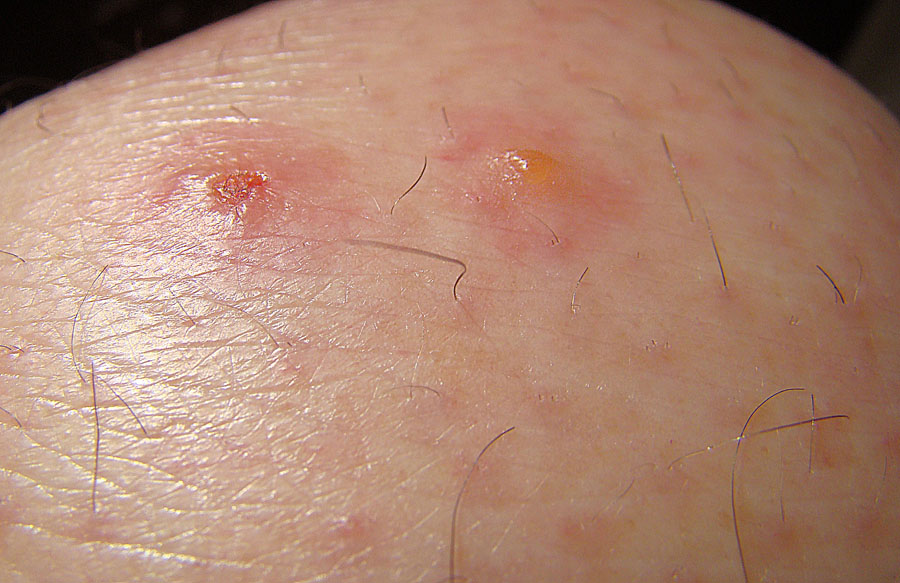
Itch mites typically feed on insects, but they can also bite humans and other animals. Although they do not typically carry illness, their bites can irritate the skin and cause excruciating discomfort and itching [31]. Until itching and red marks that resemble a skin rash appear, the bites are typically unnoticeable.
According to the Nebraska Forest Service, a chigger bite is not actually a bite because the mites inject their saliva to liquefy and eat skin, usually on the ankles, behind the knees, and on the ankles, waist, or groin—especially in areas where clothing comes into close contact with the skin, such as the sock line or bra lines. [32] When a chigger bite occurs, the skin around the bite hardens. [33] The surrounding skin becomes irritated and inflamed (pictured), and an itchy red welt forms, causing intense itching for one to two days, which may last up to a week.
According to the CDC, itch mites can also cause scabies, a disease that can spread from person to person even if symptoms are not present. [34] Scabies mites lay their eggs by burrowing into the skin. The larvae emerge from the eggs near the surface of the skin. In addition to causing a skin rash that may resemble acne pimples and cause severe itching that worsens at night, they start to molt before returning to the skin to feed. [34] You may also notice light, thin lines on the skin where the mites have burrowed, such as between the fingers, in the bends at the wrists and knees, and on the wrists and fingers.
Kissing Bug Bites

Trypanosoma cruzi, the parasite that causes Chagas disease, can be spread by kissing bugs, sometimes referred to as assassin bugs. According to Texas A&M University, around 55% of kissing bugs carry Trypanosoma cruzi, compared to 50% of these insects. [35] The CDC reports that Chagas disease affects roughly 280,000 people annually in the US, many of whom are unaware they have it.
Romaña’s sign, or bulging eyelid, is a common symptom of kissing bugs, which hide during the day and come out at night [36].
The CDC reports that 20 to 30 percent of people who contract Trypanosoma cruzi from a kissing bug will experience serious complications of Chagas disease over the long term, even decades later. In the initial weeks following infection, symptoms may include fever, fatigue, body aches, headache, rash, diarrhea, vomiting, and a loss of appetite.
- An enlarged heart
- Heart failure
- Abnormal heart rhythm
- Cardiac arrest
- An enlarged colon, also known as megacolon, which can cause issues with eating and passing waste
Hornet and Wasp Stings
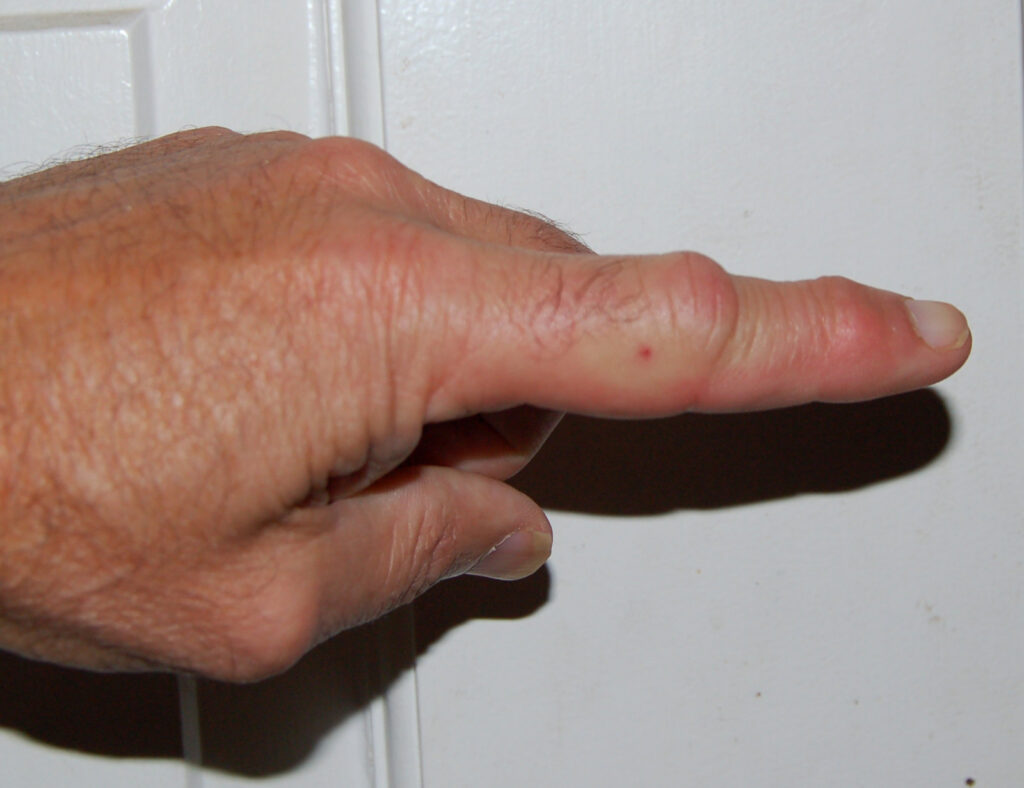
Hornets and wasps are members of the Vespidae family of insects. [37] Their bites typically cause pain, swelling, and itching right away, but they don’t usually have long-term effects. Redness or bleeding may be observed at the sting location [37].
Many individuals can simply ice the area to alleviate pain, remove the stinger if it has stayed in the skin, and take an over-the-counter antihistamine such as diphenhydramine (Benadryl) to aid with itching. Howard Russell, a diagnostician for insects and arthropods at Michigan State University in East Lansing, states that you can resume your activities after thirty minutes. According to the Mayo Clinic, symptoms usually go away in a day or two [38].
However, if you’re allergic to bee, wasp, or hornet stings—or you’ve experienced multiple stings—a sting can cause severe allergic reactions, including nausea, rapid heartbeat, swelling, dizziness, hives, and shortness of breath, warns Mayo Clinic. [38] Call 911 and seek emergency medical treatment if you experience any of these symptoms.
Hornets often build their enormous paper nests in tree hollows, as well as undisturbed locations in barns, attics, and even walls, according to the University of Kentucky.[39] Hornets will defend their nests (and may attack you) if you approach too close, so avoid the area if you come across one. According to the University of Kentucky, hornets usually only sting when threatened, so if you see one alone, leave it alone. Russell advises leaving the area immediately after being stung in order to prevent another attack.
Certain Kinds of Flies Can Bite, Too
Although horse flies and deer flies usually impact the animals in those names, regrettably, being a human doesn’t guarantee you a free pass. According to the University of Kentucky, these flies can target humans who are outside, and the intensity of their attack varies from year to year.[40] Bites can be extremely painful and cause bleeding, swelling, irritation, or an allergic reaction.[40] Swelling and irritation should disappear in a day or two.[40]
The National Pest Management Association advocates wearing light-colored clothing and insect repellent as the most significant strategy for prevention.[41]
Black flies (sometimes called buffalo gnats or “no-see-ums”) are also common throughout the United States and can bite (though they’re not known to spread disease), according to Spokane Regional Health District.[42] They’re small and usually bite around the head, particularly the eyes, ears, and scalp. Swelling, pain, and numbness from their bites might persist for a few days.
According to the Natural History Museum in the United Kingdom, all of these fly bites often manifest as painful, sensitive, elevated red lumps [43]. If an infection occurs, these may grow and form blisters.
How to Prevent Bug Bites
To lower the risk of bug bites, the CDC recommends the following: [44]
- Reduce activities that increase exposure to insect bites, such as camping, hiking, or interactions with wild animals. Where this isn’t possible, take precautions as necessary.
- Understand the particular insects that thrive in locations you’re visiting or nearby. Not all insects pose a risk everywhere in the country.
- Use an insect repellent that the manufacturers have registered with the U.S. Environmental Protection Agency (EPA). (The EPA has published an online tool to help you determine which one is appropriate in many varying conditions.)
- Use permethrin on clothes and outdoor equipment.
- Sleep beneath a mosquito net if a mosquito screen is not present in your room.
- When traveling, find out what shots or medicines you may need and any precautions you can take.
- Wear clothing that covers the skin.
- Shower after spending time outdoors to reduce the risk of tickborne diseases.
If you’ve been outside or overseas, make sure to notify a doctor of any symptoms, such as fever. They might be able to assist you in diagnosing illnesses from insect bites and starting treatment right away.
The Takeaway
From the severe pain and bleeding of horsefly bites to the frequently mark-free itching of lice, bug bites and stings can take many different shapes. In addition to transmitted diseases that can give bites a distinctive look, such as the target-shaped rash surrounding tick bites from Lyme disease, people can occasionally experience allergic reactions to bites that can result in more severe skin reactions or symptoms throughout the body. Although transmission is uncommon, insect-borne diseases, such as those carried by mosquitoes, ticks, and kissing bugs, can have very significant consequences.
Following prior stings, such as those from wasps and bees, severe allergic reactions—which frequently include hives, swelling, dyspnea, sweating, and nausea—need to be treated right away. Keep an eye out for any bites or stings you discover, and if symptoms worsen or persist longer than usual, see a doctor.



